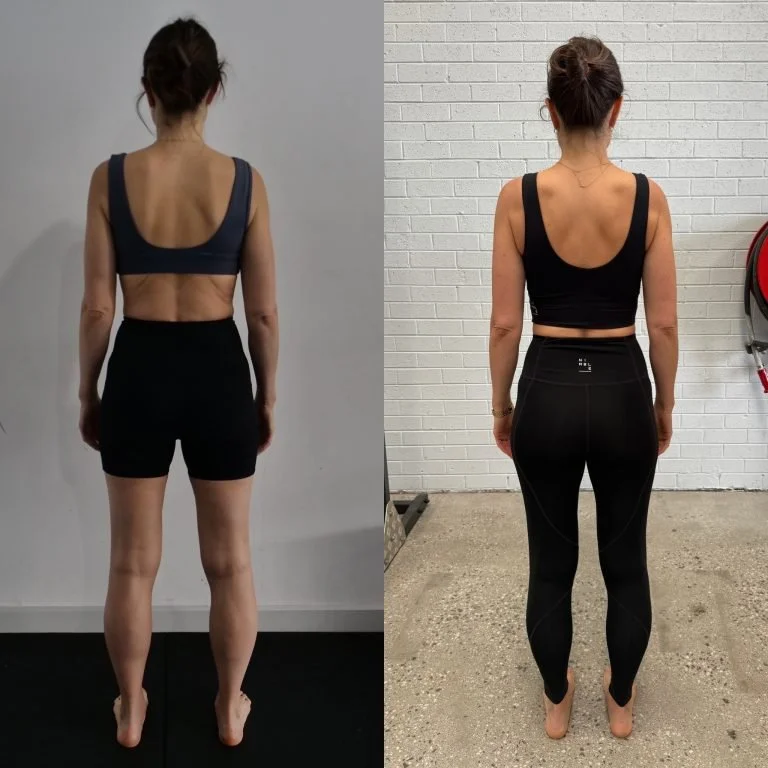Shoulder Blade Pain and Scapular Winging Correction: What It Means and How to Fix It
Understanding Shoulder Blade Pain
If you’ve ever felt pain under your shoulder blade, a stabbing pain between your shoulder blades, or an ache below the scapula, you’re not alone. These sensations are incredibly common and often linked to postural imbalances or dysfunctional movement patterns.
At Functional Patterns Melbourne, we frequently find that these symptoms stem from a deeper cause — a condition known as scapular winging. When the shoulder blade protrudes away from the rib cage, it can disrupt the entire upper body's movement, leading to shoulder pain, neck tightness, and even mid-back discomfort.
Our method is specifically designed to correct shoulder blade pain by retraining your movement and restoring proper stability through the scapula and ribcage.
What Causes Shoulder Blade Pain?
There are many possible sources of pain in the shoulder blade area, but one of the most overlooked is poor stability of the scapula. Rather than being a flexibility problem, scapular winging is a stability issue — the muscles designed to hold the scapula in place can’t do their job effectively due to deeper-rooted postural imbalances.
Common causes include:
Weak or poorly activated stabilisers, such as the pecs, lats, lower traps and serratus anterior
Over-stretching or isolated mobility work, which can make the scapula too mobile
Repetitive overhead sports that fatigue stabilising muscles
Sedentary posture, particularly sitting with rounded shoulders
In some cases, nerve involvement or genetic factors
These issues can result in pain between the shoulder blades when breathing, all pointing to instability across the thoracic region. Understanding these underlying mechanics is key if you want to correct shoulder blade pain effectively and prevent it from returning.
Why Traditional Approaches Often Fail
Many people try to fix shoulder blade pain with stretching or traditional weight training. Unfortunately, both can make things worse:
Stretching increases mobility where the body needs stability, worsening winging
Traditional gym exercises create compressive forces through the spine and ribs
Standard lifts often lack rotation, a key element for functional shoulder movement
As a result, pain may shift rather than resolve — from pain below the left shoulder blade to an ache beneath the right, or from muscle pain under the shoulder blade to tension in the neck.
At Functional Patterns Melbourne, we take a structural approach to correct shoulder blade pain, focusing on postural integration and movement efficiency rather than isolated fixes.
The Functional Patterns Solution
We view shoulder blade pain and scapular winging as part of a broader postural and movement imbalance. Our goal is not to isolate a single joint but to restore integrated movement across the whole structure.
Our corrective approach focuses on:
Postural Integration – Establishing proper tension throughout the ribcage, pelvis, and spine
Dynamic Stability – Coordinating how the scapula moves relative to the torso
Gait Training – Improving how the upper and lower body synchronise during walking and running
Rotational Mechanics – Re-educating the body to move with controlled rotation, preventing compression
By addressing the system as a whole, we often see reductions in:
Back pain under the shoulder blade
Sharp or stabbing pain under the right shoulder blade
Pain below the scapula when breathing or twisting
Chronic tightness across the mid-back
How to Approach Fixing Your Scapular Wing
Here are some basic movement patterns that can begin restoring stability through the scapula:
1. Look at Your Gait Cycle
Take a slow-motion capture of your gait cycle and analyse what looks different compared to that of an elite athlete.
2. Take Posture Photos
Look for asymmetries that may be influencing your shoulder and upper-back area.
3. Set the Ball Rolling
Sign up for the Ten-Week Online Program and/or book in to see one of our practitioners.
Apply the principles of FP’s First Four — standing, walking, running, and throwing — the blueprint of efficient human movement.
Why You Should Avoid Stretching for Shoulder Blade Pain
While stretching can feel relieving, it often worsens pain in the back and under the shoulder blade. That’s because scapular winging is caused by too much movement without enough control.
Instead of stretching, you need to strengthen the connections between the fascial chains in your body — engaging your pecs, lats, and trunk muscles with the lower body in a way that creates stability through the ribcage and shoulder joint.
When to Seek Help
If you’ve been struggling with:
Sudden shoulder blade pain without injury
Back pain below the right shoulder blade
Persistent ache beneath the scapula
Or chronic pain under the left shoulder blade
…it’s a sign your structure isn’t functioning efficiently. These symptoms don’t just go away with foam rolling or massage — they require correcting your movement impairments.
The Path to Lasting Change
At Functional Patterns Melbourne, we specialise in resolving shoulder blade pain and restoring structural balance through mechanically efficient movement.
Our process begins with a comprehensive postural and gait assessment, identifying how your scapula, spine, and pelvis interact. From there, we look to:
Correct scapular winging
Reduce pain beneath the shoulder blade
Rebuild shoulder stability and function
If you’re experiencing ongoing back pain under the shoulder blade or want to understand the real cause of your discomfort, now is the time to take an approach that delivers long-term results.
Learn how Functional Patterns Melbourne can help you correct your posture, reduce pain, and restore your body’s natural alignment.

